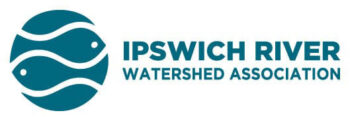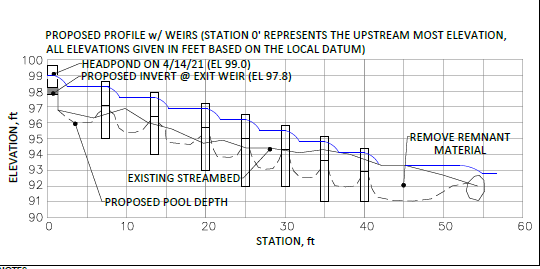Above Proposed fish passage upgrades to the Howlett Brook dam are among several steps forward for fisheries restoration in the Ipswich River watershed.
In what has been an atypical summer in more ways than one, we are excited to share some updates on our Howlett Brook Restoration efforts. Our monitoring of the watershed has continued this summer in the form of habitat assessments within Four Mile Pond and continuous water temperature monitoring at 9 different locations within the Howlett Brook watershed. The collected data will inform which locations within the watershed herring and trout will be able to thrive.
We’ve also taken big steps forward in addressing some of the migration barriers that herring will face on their journey. Working with MA Division of Marine Fisheries (DMF), we’re making fish-friendly improvements to two major dams along the migration route. The first is the Willowdale Dam owned and operated by Foote Brothers in Ipswich. They will be upgrading the current fishway with an Alaskan steeppass fishway. This type of fishway is easier to navigate, offering improved fish passage for many species. If you’ve ever paddled upstream beneath a narrow crossing, you can imagine the swimming strength fish need to make it up a fish ladder.
The second improvement comes to the Howlett Brook Dam, which is privately owned. The current fishway has been degraded for many years and the DMF Fishway Repair crew will be providing their knowledge and expertise in constructing much needed improvements.
Both of these projects are expected to be completed in 2021, although uncharacteristic high flows may have some impacts on project timing.
Additionally, we were awarded $367,000 via MA Division of Ecological Restoration’s Culvert Replacement Municipal Assistance grant program for the Town of Topsfield to upgrade the crossing of the Hood Pond outlet at Pond Street. This project was originally identified via the collaborative Great Marsh Barriers Assessment Project, where it was ranked as one of the highest priority barriers in the Parker-Ipswich-Essex River watersheds. This ranking took into account both the ecological and infrastructure risks, meaning that the current undersized structures at Pond Street pose a threat to both wildlife and public safety.
We will have more updates to come on our Howlett Brook restoration efforts, but in the meantime, please contact Restoration Director Neil Shea at [email protected] with any questions or comments.

